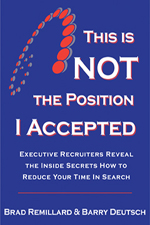How to show 40 years experience on a two page resume
These questions are from readers of my weekly column in the Orange County Register. It appears every Tuesday in the business section and on-line at www.ocregister.com
Q. What is the best way to show 40 years of experience on a résumé and still keep the length to two pages?
A. I recommend showing in chronological order your last 10 to 15 years of experience. For experience before that, simply list your companies, job titles and dates. For most candidates, their most recent experience is what recruiters and hiring managers are interested in.
Let’s face it: Your experience 40 years ago should not be all that relevant. I hope in that 40-year time frame you have grown. You should question whether this is the right position for you if the company’s decision is based on what you did 40 years ago, when compared with the last 15 years.
There are exceptions to this. If you believe some experience 40 years ago is important to the new role, I recommend expanding that relevant experience in your résumé.
Q. Most of my career is in financial services. I want to get out of that industry and into health care. What is the best way to make this transition?
A. Making an industry change in this economy is difficult, unless you have one of those jobs in which the skills required are not industry-specific, meaning your skills and training are easily transferable to another industry. The issue you have to overcome is your competition for an opening will probably include people in the health care industry. Most companies will look at those with industry experience first.
The best way to make an industry change is through networking. You need to build relationships with people in the industry. To do this, consider attending professional associations, joining networking groups in health care, attending trade shows or conferences and connecting with health care people in your local area via LinkedIn. As they get to know you, they will be able to determine how your strengths outside the health care industry can apply to the problems they need solved in their company. Recruiters and submitting résumés via ads are long shots.
There are some barriers you should think about overcoming when changing industries, assuming your skills are not easily transferable. The first one is compensation. Chances are you are more valuable in the financial services industry than health care. Therefore, the position will probably be at a lower level and so will the compensation. Secondly, some additional training and education may be required.
I welcome your thoughts and comments. If this was helpful please forward to your network and connections on LinkedIn or facebook.
Brad Remillard





